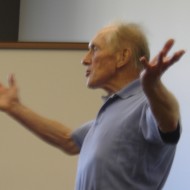
There is a well-known marketing adage – no one wants a bar of soap. Customers want to be clean, have soft skin, or smell nice. By extension, no one wants a Laban Movement Analysis. Instead, our customers want to dance better, find a way to stop back pain, or gain insight into self and other.
Rudolf Laban called movement “man’s magic mirror.” He saw that movement reflects motivations, thoughts, and feelings. He drew analogies between the mastery of movement and the mastery of self.… Read More









